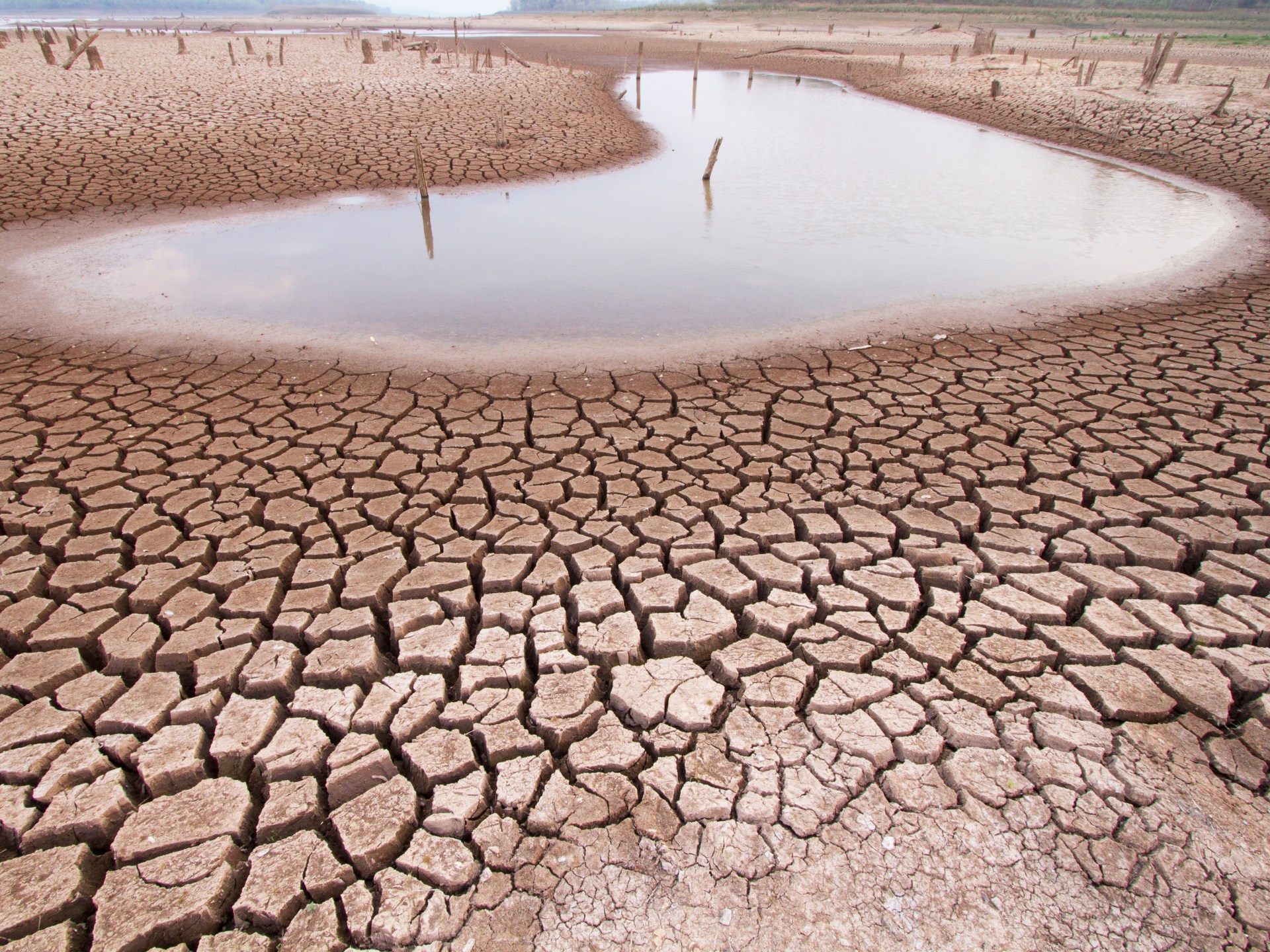1.84 billion people around the world are at risk of drought, some of them at risk of severe or very severe drought (Shutterstock)
Based on data from 101 countries that are party to the United Nations Convention to Combat Desertification (UNCCD), 1.84 billion people around the world are vulnerable to drought, part of them at risk of severe or very severe drought, according to a new UN report. This means that almost one in four people on the planet is vulnerable to drought.
According to the report released during the first week of December, "Drought Snapshots 2023", the global drought burden falls mainly on the poorest, with 85% of those affected by drought living in middle- and low-income countries.
Drought and climate change
Drought is defined as a period of time when an area experiences less rainfall than usual, resulting in reduced soil and groundwater moisture and reduced waterway flow, and consequently a general water shortage and crop damage.
Drought is directly related to climate change, as high temperatures promote evaporation, reducing surface water and drying out soil and plants.
In addition, warmer temperatures in winter cause less rainfall on lakes, which are major river resources, reducing the amount of water flowing into drought-facing areas.
Besides, some research has found that higher temperatures increase rainfall fluctuations, which means that there will be drier periods, and even when rainy periods come, the falling water will run on dry ground and not absorb easily, increasing the likelihood of flooding.
In a 2020 study published in the journal Science, researchers noted that human-induced climate change accounts for 46 percent of the causes of massive droughts that have hit areas such as the western United States and northern Mexico over the past two decades.
Drought is directly related to climate change and affects the world's livestock (Shutterstock)
The world is changing
According to the UN report, global drought leads to forced migration, with 98% of the 32.6 million new disaster-induced displacements in 2022 resulting from weather-related hazards such as storms, floods and droughts.
In general, climate change heat waves and droughts reduced global economic growth by as much as $29.3 trillion between 1992 and 2013, particularly in fragile regions such as sub-Saharan Africa.
Globally, the UN's International Organization for Migration predicts that there will be 1 billion climatic migrants by half a century, and this estimate is optimistic as other models put the number at between 2.1 and 4.<> billion.
Drought is escalating
The Drought Profiles 2023 report shows that the effects of drought are on the rise, and the biggest proof of this is what happened in 2022 when Europe experienced its harshest summer and the second warmest year on record, and therefore the largest drought-affected region overall compared to the annual average in more than two decades.
The report predicts that by the end of the century, the duration of moderate, severe and exceptional droughts will double in many regions of China, and the severity of the drought will increase by more than 80 percent.
Cover of the UN report "Global Drought at a Glance 2023" (Al Jazeera)
Worse, drought has a diverse impact on the terrestrial environment, for example, drought severely affects homogeneous ecosystems, leading to the migration or even extinction of an entire organism.
Drought can also jeopardize primary energy sources. For example, when water levels drop, the cooling capacities of power plants decrease, and hydropower installations can also be affected when water is short.
For example, hydropower generation has fallen by 44% overall in Spain due to the recent drought. For Norway, which relies on hydropower for about 90% of electricity generation, the unusually low levels of its reservoirs have obliged it to limit energy exports.
In Argentina, for example, soybean production is expected to be 44% lower by the end of this year than the average of the previous five years, and soy yields are expected to be the lowest since 1988.
Planning for short, severe droughts requires about four times the cost of planning for long light droughts.
Agriculture-based economy faces major drought problems (Shutterstock)
Working on the future
According to the UN report, with temperatures rising 3°C above pre-industrial levels this century, the world's population exposed to severe drought to exceptional drought is expected to rise from 3% to 8%.
The report shows that extreme heat and drought will hit 90% of the world's population at some point, which in turn will weaken people's ability to take appropriate measures to address worsening climate change.
For these reasons, working to develop sustainable development models globally has become a necessity rather than just a choice, as sustainable development can reduce people's vulnerability to drought by 70% compared to fossil-fuel-based development, according to the report.
Source : Websites

